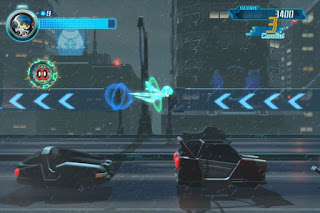Yakuza on PS2 was pretty flippin' dope, but it was also pretty flippin' clunky. Not content with leaving things like they were, and finding themselves with a ton of reusable assets from Yakuza 0, the Ryu Ga Gotoku Team set to polish their very first Yakuza entry by blending its top-notch story with the lustrous gameplay of 0. And it works beautifully, revitalizing what was Yakuza's weakest link.
The story is exactly the same as it was in the original game, to the point of cutscenes sticking to the same camera angles and, dare I say, animations of the original. The story now has the added benefit of having Yakuza 0's backstory, making Nishiki's transformation into a villain hitting harder than before. Alongside the original plot of Kazuma returning from prison to find his bestie-turned-enemy and the mystery surrounding the lost child Haruka and the stolen 10 billion yen, each chapter is prefaced by new scenes showing the trials and tribulations that turned Nishiki into who he is 10 years later. These scenes are very welcome and help make Nishiki a more interesting and sympathetic character. On the other hand, they added a ton of new dialogue and scenes for the series' breakout character Majima, trying to marry his initial portrayal with the zanier anti-hero he became. It kinda, sorta works, but I think a complete and total rewrite of his role would have been better. Majima isn't the ally-murdering psycho he was in the first game, so having him beat up his goons feels incredibly out of character, even if it was his original portrayal. Later Yakuza stories have been much more dramatic and twisted, but it's still a great plot and the new additions only make it better.
I'm a bit tired of having to repeat the exact same gameplay description since Yakuza doesn't change much between installments, so I'll try to cruise through it. Yakuza is beat'em up action game that takes place in the city of Kamurocho. While you always have a main objective, you can also choose to spend time solving silly sidequests or wasting time with minigames like Bowling, Pocket Circuit Racing, Batting, etc. As you run around the city of Kamurocho you may come across miscreants that need a good beating, and Kazuma Kiryu, the hero, is only happy to oblige. Defeating enemies and solving sidequests reward Kazuma with experience points you can then spend on various different skill trees, depending on whether you want more health and strength, more moves or expanding your energy gauge to allow for stronger Heat(super) attacks. For the first time in the series, you can save ANYWHERE now.
Remember how Yakuza 0 had the best and deepest combat in the franchise? It's back! Kazuma can change between four different styles(Brawler, Rush, Beast and Dragon) on the fly, each style having entirely different strengths and weaknesses. The first three can be developed by investing experience points on the aforementioned skill trees, but the Dragon style is a bit different... There's a new mechanic, 'Majima EVERYWHERE'. Basically, Majima really wants to fight Kiryu, but he wants to fight him at his best, so he'll try to ambush Kiryu at different times, from a bar to a cabaret, in order to train him and reawaken his Dragon style. It'll take a long, long while before Dragon is anywhere close to useful, and even then, it's been nerfed pretty hard, so you are just fine sticking with the first three styles. On the other hand, even on the Normal difficulty setting, Kiwami felt more challenging than any game before it, so you can't just mash your way through.... unless you are carrying a ton of healing items that is. Eventually it can get downright cruel, when story bosses start appearing with a ton of health bars, are fantastic at dodging and require the optional Dragon-style Extreme Action to take out of their healing auras.
The game is brilliant, but there is a single misstep that hurt it a bit: Bosses can regenerate health. That's right, at two different times throughout the battle, at least on Normal, bosses will enter special stance and start recovering health. You can only stop this by performing a HEAT action on them. This means that you'll be holding onto your heat waiting for these moments instead of using them in battle, which is a huge disappointment. The game doesn't tell you this, but it's in your best interest to learn the Extreme Heat actions from the Soul skill branch first so that you have the required heat actions to cancel their healing.
Yakuza Kiwami is the definitive way to play Yakuza 1, no question about it. Everything that was great about the first game is here alongside everything that was great about Yakuza 0, without its terrible upgrade system. Not every sidequest made it back, but most of them did and were rewritten to make them more interesting, and there's a ton of new ones, so there's no shortage of stuff to do in this game. It might have gone a bit too far making Majima a wacky walking meme, but I didn't mind it too much and just decided to enjoy the craziness.
9.0 out of 10



































